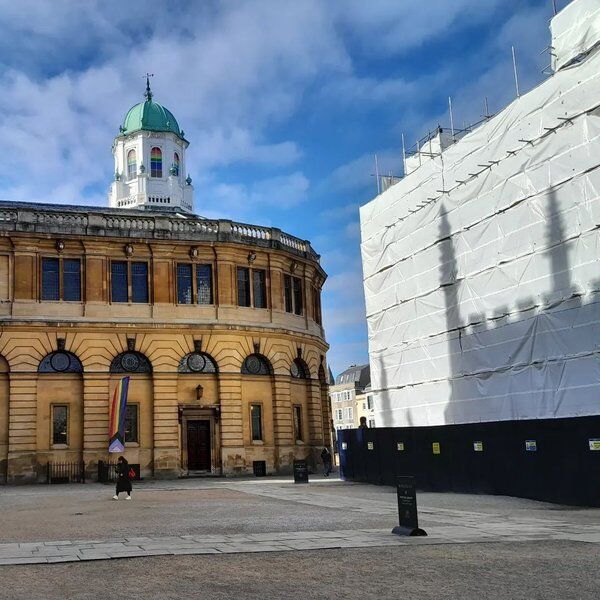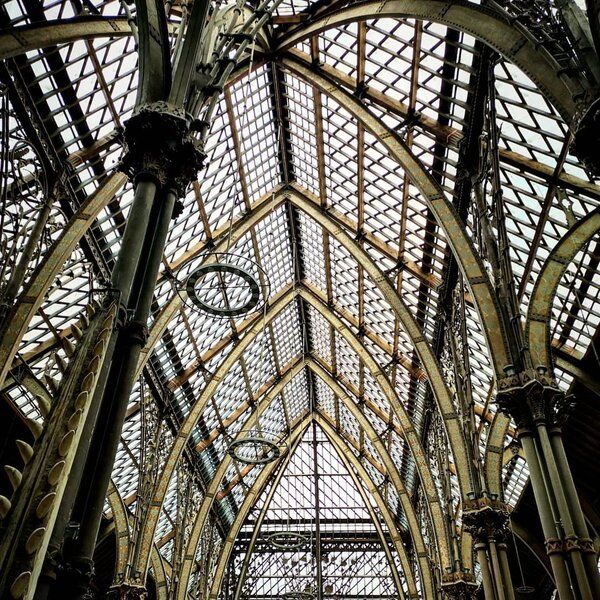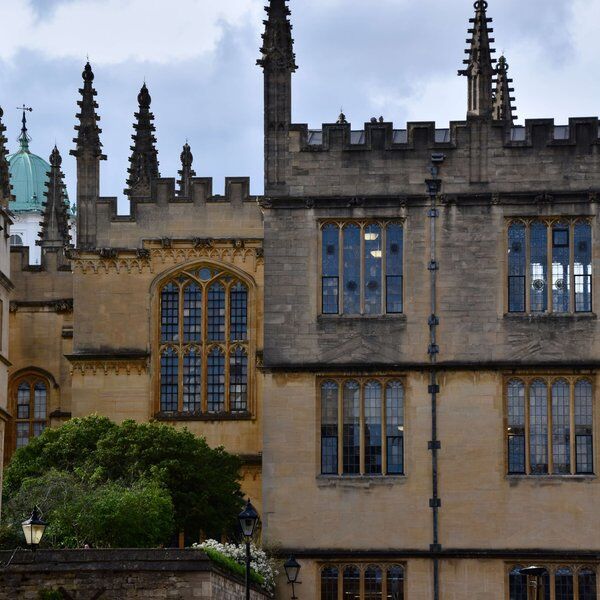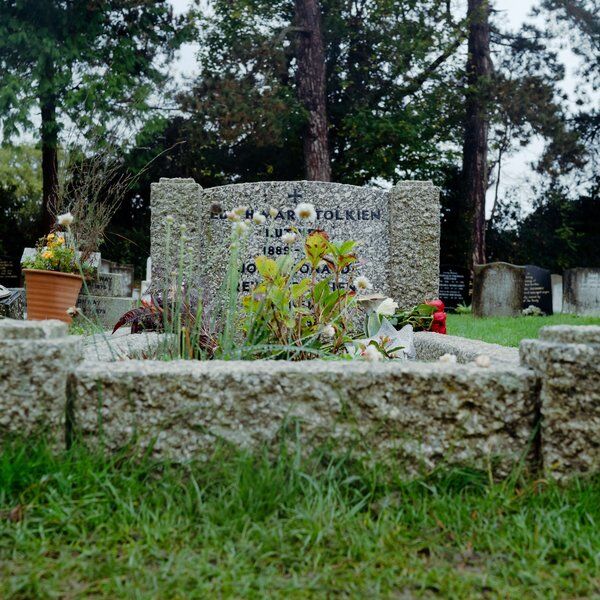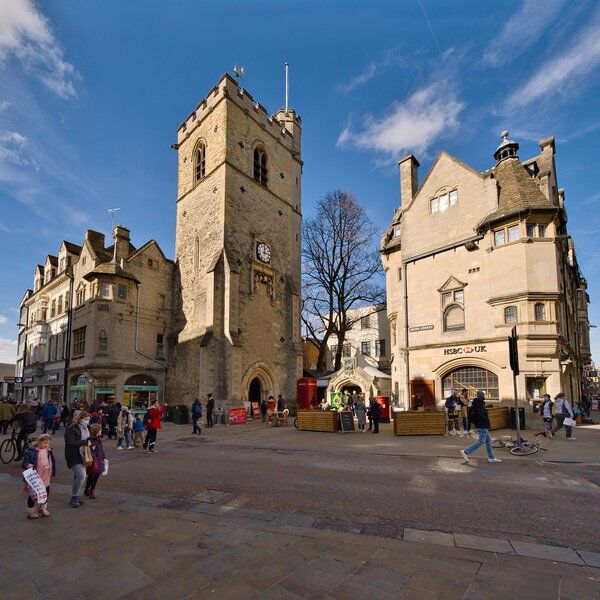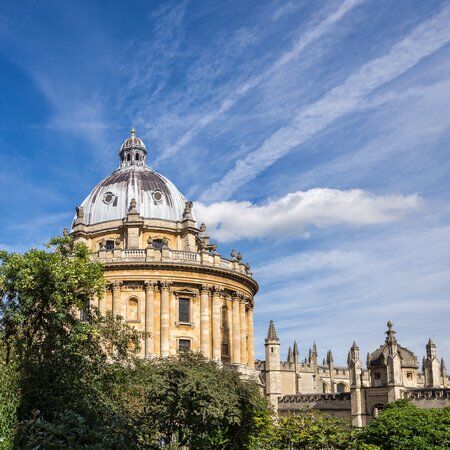
Exploring the Radcliffe Camera
The Radcliffe Camera, affectionately referred to as "Rad Cam" by locals and students, is an impressive Grade I listed circular structure at the heart of Oxford. Originally intended to house the scientific and mathematical collections of the Bodleian Library, one of Europe's oldest libraries, it has since become part of the broader Bodleian Library complex.
Linked to the Bodleian Library via the Gladstone Link, the Radcliffe Camera comprises three historic reading rooms: the Upper Reading Room, housing resources on history, art, archaeology, and anthropology; and the Lower Reading Room, dedicated to English literature and theology. There is also a third place: Duke Humfrey’s Library.
Within its walls rest some of Europe's oldest written works, including 16th-century Bibles and volumes on ancient philosophy. While not freely accessible to the public, guided tours organised by the Bodleian Library allow visitors a glimpse into the Radcliffe Camera's interior, including the History Faculty Library.

Naming the Radcliffe Camera
Contrary to popular misconception, the Radcliffe Camera, often hailed as the "heart of Oxford," does not owe its name to any photographic instrument. Instead, the term 'camera' simply refers to a room. Dr. John Radcliffe, a distinguished physician and parliamentarian, bequeathed £40,000 to Oxford University upon his passing in 1714, with the stipulation that a library be erected in his honour. Thus, the Radcliffe Camera was named to embody his philanthropic spirit.

The Gladstone Link: The Radcliffe Camera’s Underground Tunnel
In a remarkable feat of engineering lasting from 1909 to 1912, the Radcliffe Camera saw the creation of an underground tunnel beneath Radcliffe Square: the Radcliffe Link, later renamed the Gladstone Link.
Named after statesman William Gladstone, this underground tunnel was unveiled after a refurbishment in 2011. Previously used as an underground bookstore, it now houses an astonishing collection of reading rooms capable of accommodating approximately 600,000 books.
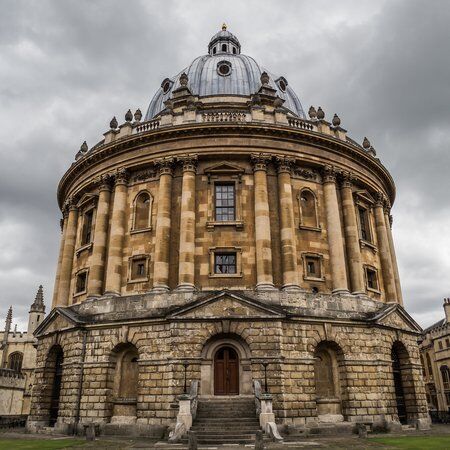
Creating the Radcliffe Camera
Selecting the Right Architect
The selection of an architect for the Radcliffe Camera involved a meticulous process with stiff competition from distinguished architects such as Christopher Wren, Nicholas Hawksmoor, known for co-designing London's Old Royal Naval College, and James Gibbs. After careful consideration, Gibbs, born in Scotland in 1682, emerged victorious with his groundbreaking circular library design.
Gibbs' architectural journey began in Rome. His legacy left a clear imprint on British architecture, not only with the Rad Cam but also with landmarks such as St Martin-in-the-Fields and the Senate House at Cambridge University.
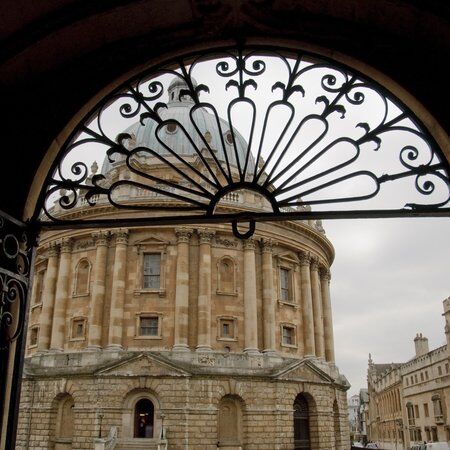
Delayed Construction
Despite Radcliffe's generous bequest, creating the Radcliffe Camera was met with significant delays due to the stipulation that funds for its upkeep would only become available 30 years after his death. Consequently, many years passed before the first stone was laid on May 17, 1737.
Led by skilled craftsmen William Townesend and John Philipps, the project progressed smoothly until February 1741. A dispute arose concerning the construction material for the dome, prompting a temporary halt until a resolution came to light; timber and lead would be the replacement.
Interior work commenced post-structural completion, overseen by John Phillips and Joseph Artari. The interior’s grandeur was highlighted by details such as the installation of Radcliffe's marble statue, sculpted by John Michael Rysbrack. Despite minor delays and setbacks, the exterior was completed by 1747, the entire building was complete in 1748, and the doors were open to students a year later.
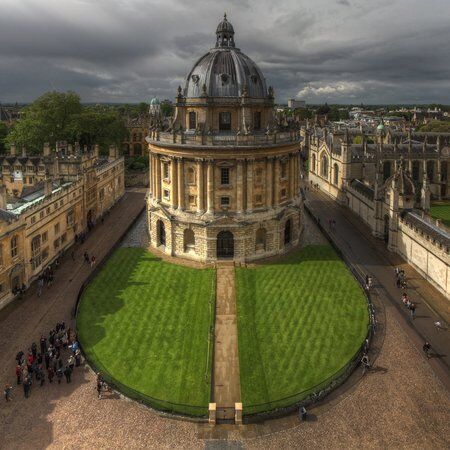
The Result
The Radcliffe Camera is England's earliest circular library, with a 3-stage exterior and a 2-storey interior, created with local stone from Headington and Burford. The ground stage, characterised by its hollowed out arches, gives way to a central stage divided intermittenly by twin Corinthian columns. The crowning glory lies in the lanterned dome atop the third stage, covered in lead.
Despite Gibbs’ attempt to resist the dominant Palladian movement, the Radcliffe Camera, at a height of 140 feet, has a distinct Palladian style. This can be seen in the dome, which ranks as the third-largest in Britain, complete with a symmetrical, repetitive pattern, typical of Palladian architecture.

Controversy Surrounding the Radcliffe Camera
In the 18th century, opinions about the Radcliffe Camera in Oxford varied widely. Thomas Salmon's 1744 work, "The Present State of the Universities," hailed it as "the most magnificent Structure in Oxford”. This sentiment was echoed by "The Gentleman and the Lady's Pocket Companion for Oxford" in 1747, which also praised it as the "new public Library."
However, by 1773, Edward Tatham expressed disapproval, criticising its location for disrupting the area's harmony and obstructing views of other buildings. He argued for an alternate site on the north side of Broad Street, south of the gardens of Trinity College.
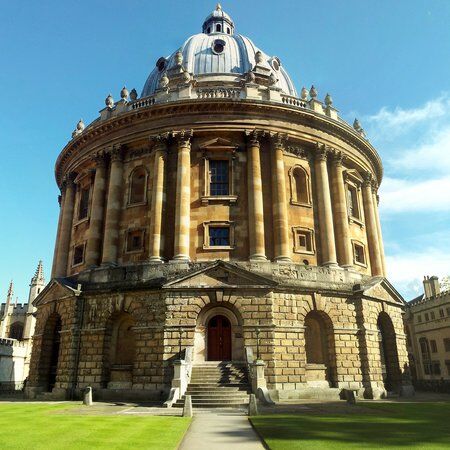
Integration into the Bodleian Library
Initially operating independently from the Bodleian Library, the Radcliffe Camera underwent a significant transformation in the early 19th century under the guidance of librarian Dr. George Williams. Williams brought the library up to date and out of the state of neglect into which it had fallen, focusing on natural history and medical literature.
By 1860, the Radcliffe Science Library had become part of the Bodleian Libraries, assuming the name "Radcliffe Camera." Over time, its collections found new homes in various university libraries, while the Camera itself became the main reading room of the Bodleian Library, preserving its historical significance.
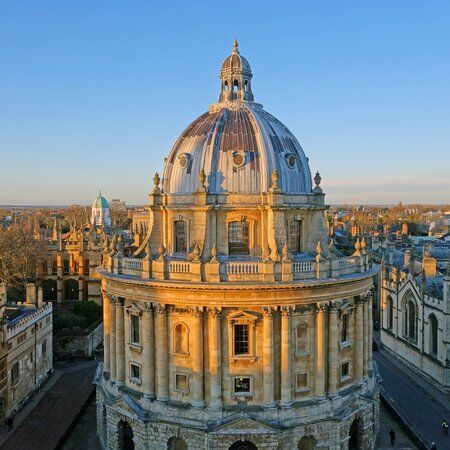
Exploring the Radcliffe Camera
Guided Tours of the Radcliffe Camera
Guided tours, often available on weekends and select weekdays, highlight the Radcliffe Camera’s detailed past and its role in shaping Oxford's identity, from its striking exterior to the secrets held within.
Exploring Nearby Attractions
When visiting the Radcliffe Camera visitors can also check out other attractions nearby. The Divinity School, Convocation House, Duke Humphrey's Library, and the upper reading room can be accessed easily from Radcliffe Square, including routes from St. Mary the Virgin Church, Brasenose College Lane, and Catte Street.
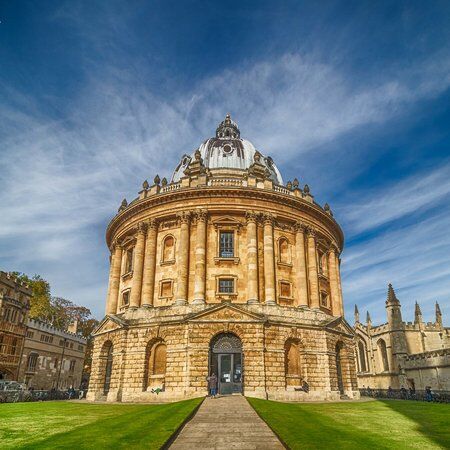
Discover More of Oxford with CityDays
To unearth more secrets about Oxford University's other notable buildings, including The Sheldonian Theatre, why not check out our blog!
Or, if you're interested in visiting the Sheldonian and other hidden gems in Oxford yourself, why not check out our outdoor treasure hunts in the area? There are two hunts to choose from: Scholars and Spires and Ancient Echoes each promising all the fun of an escape room with the historic facts and whimsical trivia of a walking tour.
Both routes take you around Oxford on a curious journey that will take you into the city’s fascinating alleyways while learning more about Oxford’s turbulent history in a new and interactive way.
Take the stress out of planning your visit to Oxford and book your adventure today!
Not visiting Oxford this time? Don’t worry, you’ll find us all over the world.












